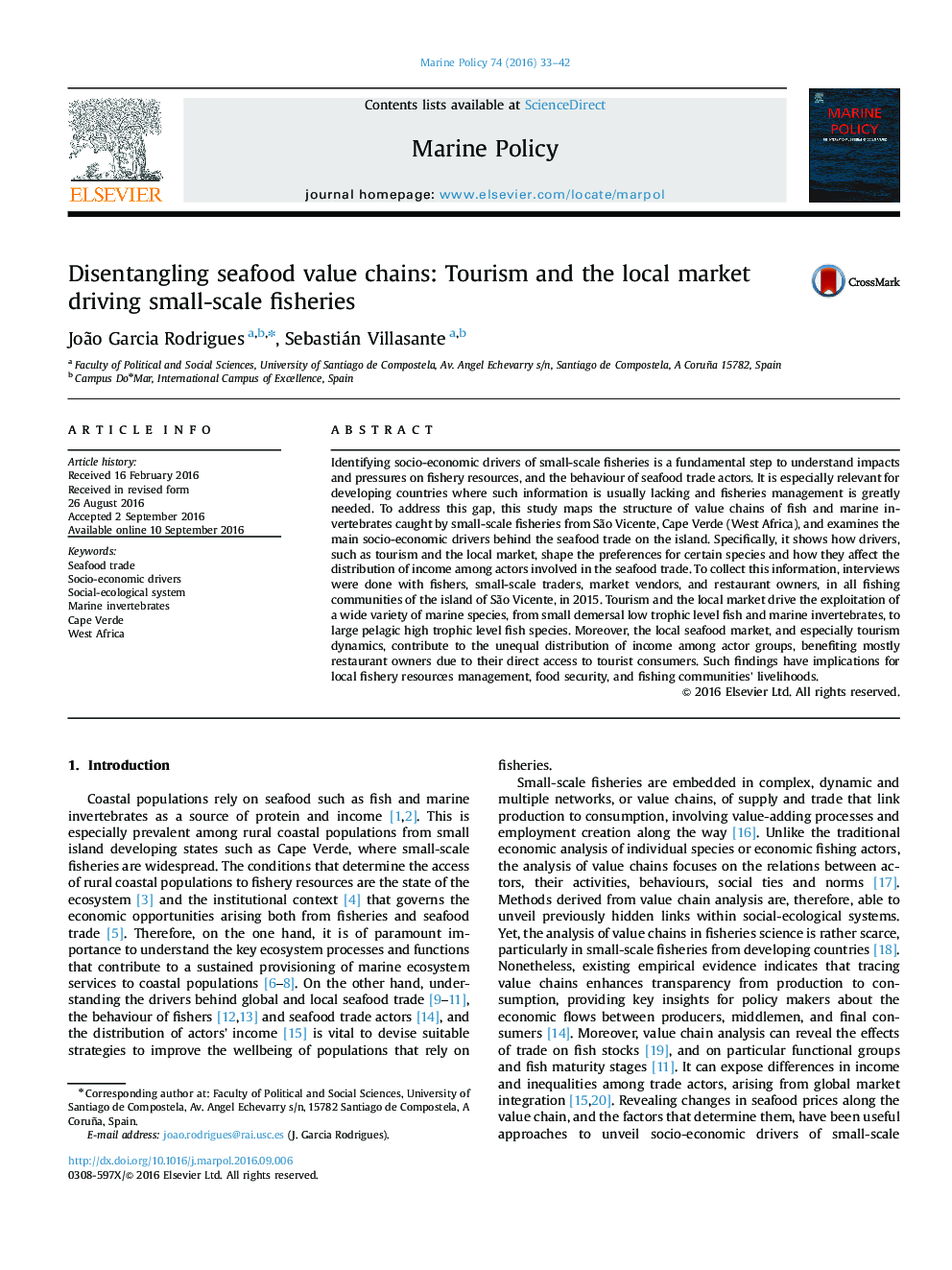| کد مقاله | کد نشریه | سال انتشار | مقاله انگلیسی | نسخه تمام متن |
|---|---|---|---|---|
| 5118181 | 1485505 | 2016 | 10 صفحه PDF | دانلود رایگان |
- Value chain analysis is a useful approach to identify key drivers of fisheries.
- The structure of seafood value chains in São Vicente, Cape Verde, was mapped.
- Tourism and the local market drive the exploitation of a wide variety of species.
- These drivers contribute to the unequal distribution of income among actor groups.
Identifying socio-economic drivers of small-scale fisheries is a fundamental step to understand impacts and pressures on fishery resources, and the behaviour of seafood trade actors. It is especially relevant for developing countries where such information is usually lacking and fisheries management is greatly needed. To address this gap, this study maps the structure of value chains of fish and marine invertebrates caught by small-scale fisheries from São Vicente, Cape Verde (West Africa), and examines the main socio-economic drivers behind the seafood trade on the island. Specifically, it shows how drivers, such as tourism and the local market, shape the preferences for certain species and how they affect the distribution of income among actors involved in the seafood trade. To collect this information, interviews were done with fishers, small-scale traders, market vendors, and restaurant owners, in all fishing communities of the island of São Vicente, in 2015. Tourism and the local market drive the exploitation of a wide variety of marine species, from small demersal low trophic level fish and marine invertebrates, to large pelagic high trophic level fish species. Moreover, the local seafood market, and especially tourism dynamics, contribute to the unequal distribution of income among actor groups, benefiting mostly restaurant owners due to their direct access to tourist consumers. Such findings have implications for local fishery resources management, food security, and fishing communities' livelihoods.
Journal: Marine Policy - Volume 74, December 2016, Pages 33-42
